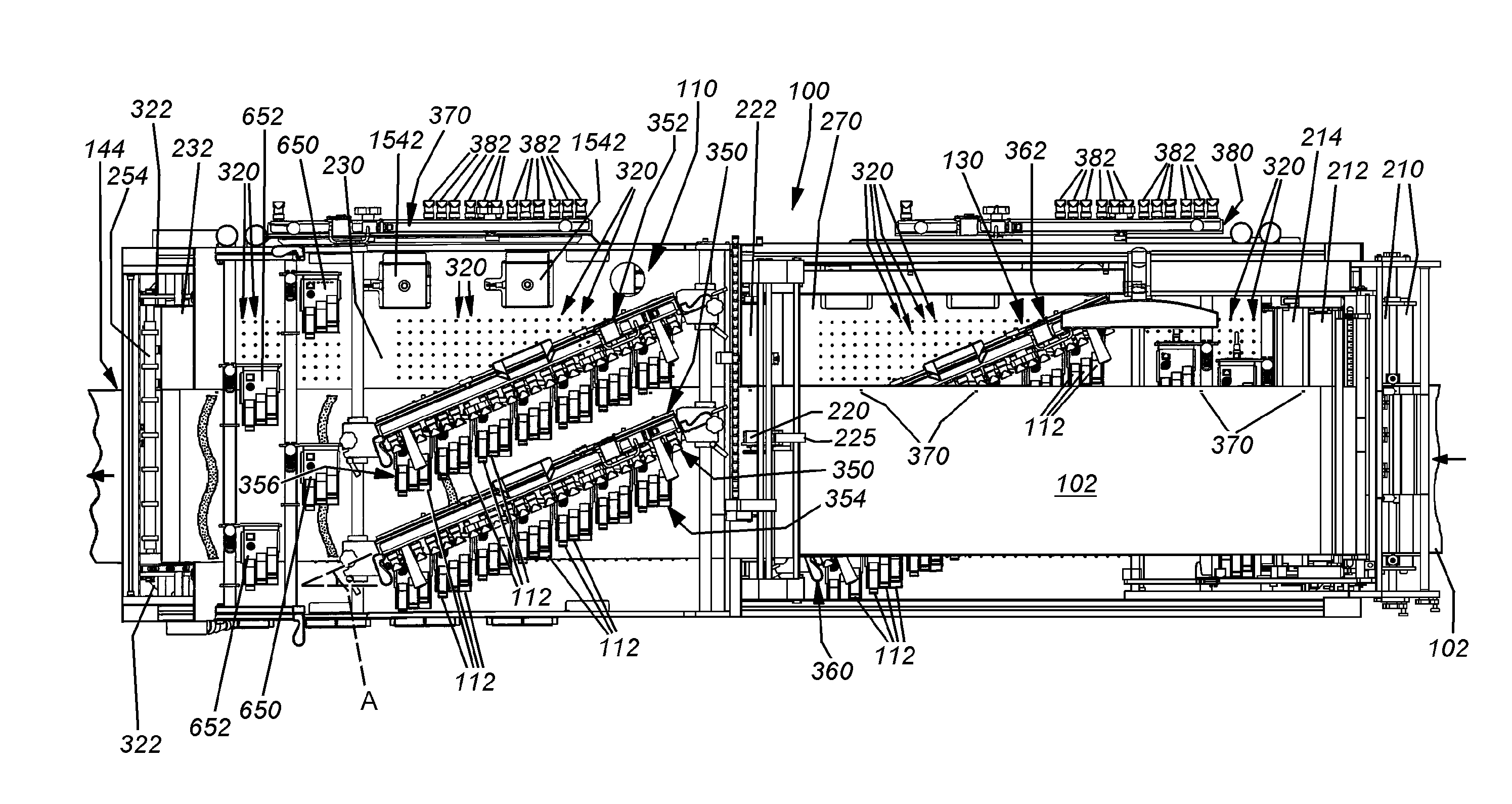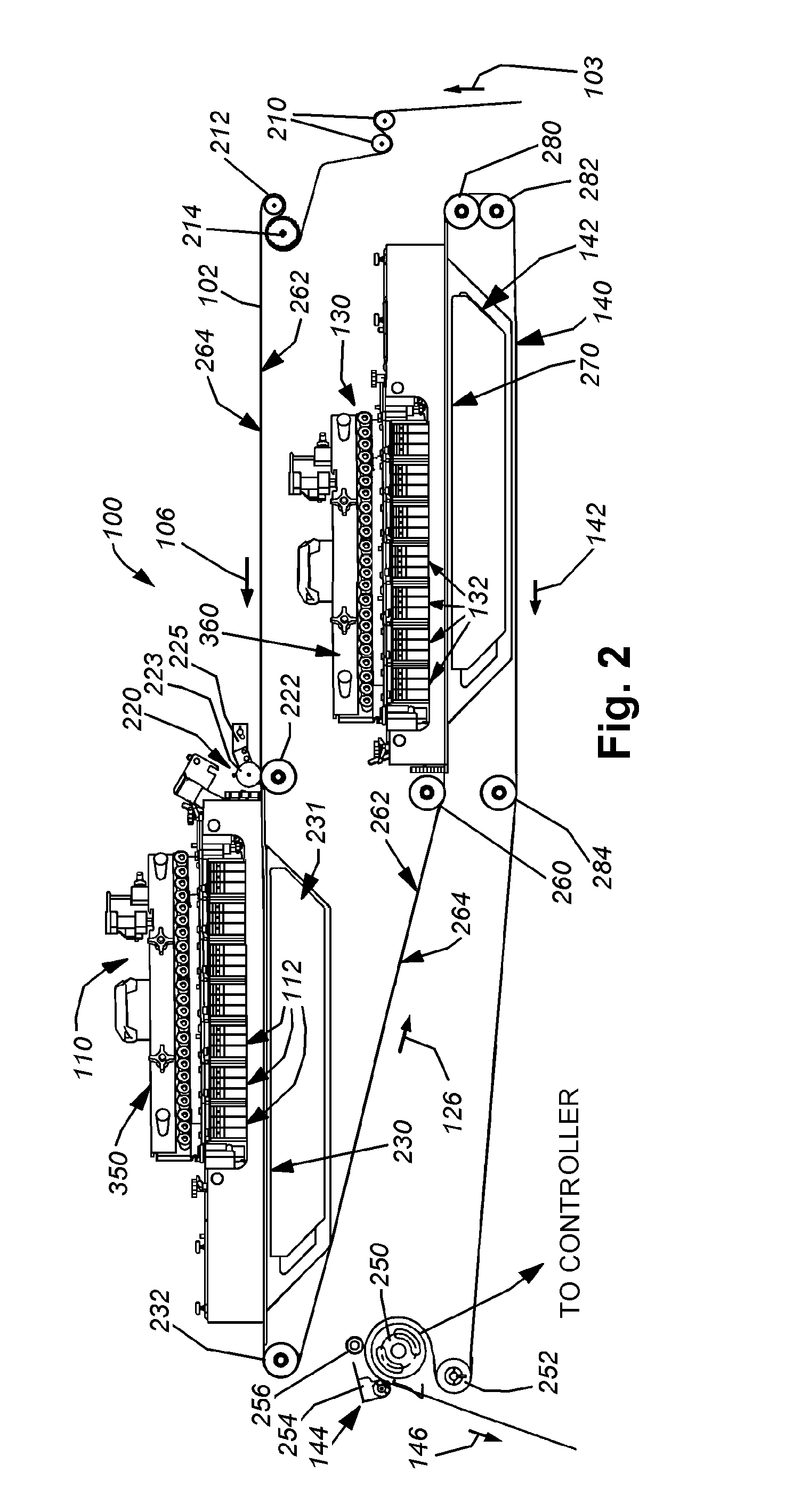System and method for printing a continuous web employing a plurality of interleaved ink-jet pens fed by a bulk ink source
a technology of interleaved ink-jet pens and continuous web, which is applied in the direction of printing, typewriters, spacing mechanisms, etc., can solve the problems of prone to speed and reliability limitations, inability to provide color printing, and inability to print color, etc., to achieve convenient duplex printing, maintain the flatness of the web, and ensure the effect of quality
- Summary
- Abstract
- Description
- Claims
- Application Information
AI Technical Summary
Benefits of technology
Problems solved by technology
Method used
Image
Examples
Embodiment Construction
[0034]FIG. 1 illustrates a multi-ink-jet pen printer 100 adapted to feed a high-speed continuous web 102. The web 102 is fed (arrow 103) from a sensing loop 104 that is maintained at a predetermined size range by a driven roll stand (not shown) or other utilization device as the web 102 is drawn into the printer 100. The web 102 is directed downstream (arrow 106) to an upper printing fixed array 110 where the exposed top side of the web is printed via an array of interleaved ink-jet pens 112. As described further below, a group of pens is fed continuously by a respective manifold 114, 116 that receives bulk ink from each of a plurality of interconnected ink boxes / bags 120, 122, 124 and 126. The boxes / bags include one or more standard or custom ink colors that are adapted to be distributed through the ink-jet pens 112 via their electronically controlled nozzles.
[0035]The web 102 is fed (arrow 128) from the upper printing array 110 to a lower printing fixed array 130 that supports a s...
PUM
 Login to View More
Login to View More Abstract
Description
Claims
Application Information
 Login to View More
Login to View More - R&D
- Intellectual Property
- Life Sciences
- Materials
- Tech Scout
- Unparalleled Data Quality
- Higher Quality Content
- 60% Fewer Hallucinations
Browse by: Latest US Patents, China's latest patents, Technical Efficacy Thesaurus, Application Domain, Technology Topic, Popular Technical Reports.
© 2025 PatSnap. All rights reserved.Legal|Privacy policy|Modern Slavery Act Transparency Statement|Sitemap|About US| Contact US: help@patsnap.com



